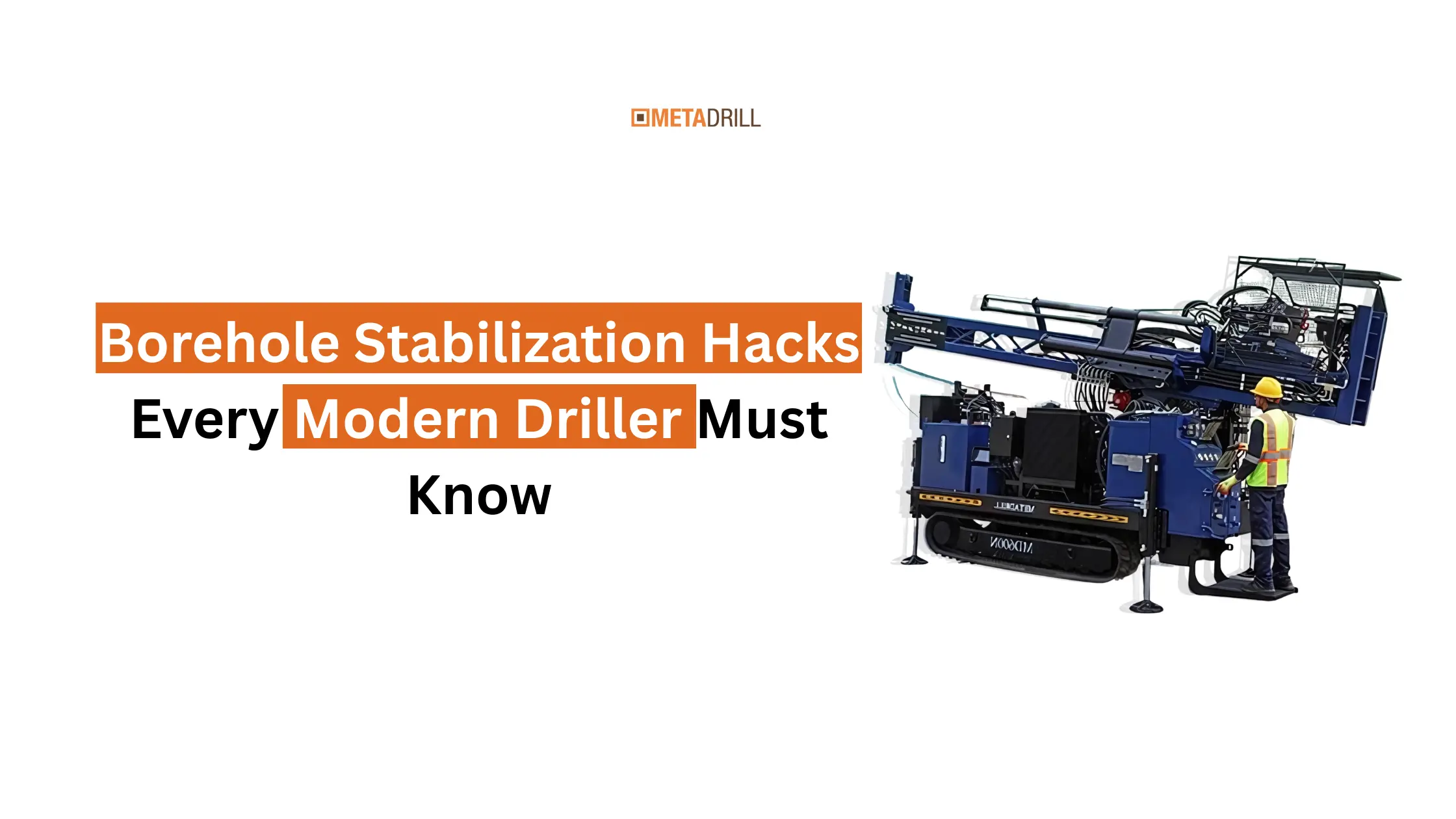
Borehole support systems are important for safe drilling. Whether you use a geotechnical drill for soil testing or large exploration rigs for deep projects, keeping the borehole stable is the key to success. Thanks to modern drill rig manufacturers, drillers today have smarter ways to keep boreholes safe and working well.
Why Borehole Stability Matters?
A borehole is not just a hole in the ground—it is the main path for your project. If the borehole collapses or fails, everything is at risk: safety, accuracy, and progress. Borehole support systems help hold the walls of the hole, stop soil from falling, and prevent tools from getting stuck.
This is important when using an exploration drill rig in difficult or changing ground. Drilling is expensive, and every meter counts. If a borehole collapses, time and money are lost. This is why every driller needs to know simple hacks to keep boreholes stable.
Hack #1: Choose the Right Casing for the Job
Casing is one of the easiest and strongest ways to stabilize a borehole. The right casing keeps the hole from falling in and protects the walls from pressure changes. When used with good drilling rig equipment, casing makes drilling smoother and safer.
Modern Geotech drill rigs make it easier to install casing even in small or complex areas. Instead of doing heavy manual work, drillers can use rigs that handle casing with speed and accuracy. This saves time and reduces operator fatigue.
Hack #2: Use Drilling Fluids Smartly
Drilling fluids are important for borehole stability. They balance pressure, carry cuttings to the surface, and make the walls of the borehole stronger. But the trick is not to use more fluid—it’s to use the right fluid in the right way.
With new drilling rig equipment, drillers can check fluid flow and thickness in real time. For sandy soil, a thicker fluid is best. For rocky ground, lighter fluid is better. When drilling fluids are used with borehole support systems, drillers get maximum control and stability.
Hack #3: Don’t Underestimate Grouting
Grouting is another strong way to stabilize boreholes. By filling weak areas with cement or polymer grout, drillers can lock loose zones in place. This is especially helpful when using an exploration drill rig in broken rock where collapse is more likely.
Modern grouting machines used with drill rigs work faster and give better results. Grouting provides both support and safety in drilling projects where accuracy is critical.
Hack #4: Match Support Systems with Soil Conditions
Not every type of ground is the same. A borehole in clay will behave differently from one in sand or rock. Using the same method everywhere can cause collapse. That is why smart drillers adjust borehole support systems based on the type of soil.
Examples:
Clay-rich soils: Casing plus light fluids often work well.
Sandy soils: Thicker fluids give better wall support.
Rocky formations: Grouting is usually the best option.
Today’s geotechnical drill rigs allow drillers to test soil quickly and change methods right at the site.
Hack #5: Keep Your Rig in Top Shape
Even the best borehole support systems cannot work if your rig is not in good condition. Regular maintenance of drilling rig equipment keeps projects smooth and avoids breakdowns.
Now, many drill rig manufacturers make rigs with built-in systems that show early warnings of problems. This helps operators repair parts before they fail. Keeping rigs healthy is as important as choosing the right support system.
Hack #6: Plan for Long-Term Borehole Integrity
Some boreholes need to stay open for weeks. In this case, short-term fixes like fluids are not enough. Long-term stability needs casing, liners, or stronger borehole support systems to keep the hole open.
This is critical in deep drilling with exploration drill rigs, where collapse risks are higher. Good planning avoids the cost and danger of re-drilling failed sections.
Hack #7: Invest in Training and Technology
Stabilization depends on both tools and people. Drillers must understand soil, fluids, and support systems to make the right choices on site.
Modern Geotech drill rigs also help by using smart technology. These rigs have automatic settings and safety alerts that make drilling easier and safer. When technology and skilled operators work together, boreholes stay stable.
The Future of Borehole Support Systems
The future of borehole support systems is smarter and greener. Eco-friendly fluids, recyclable casing, and rigs powered by AI are already being developed. These reduce environmental damage and improve efficiency at the same time.
Top drill rig manufacturers like MetaDrill are leading the way with rigs and drilling rig equipment that already include support features. This makes stability part of the rig itself, not just an extra step.
You can also check: Turning Drilling Data into Gold: Insights from Core Samples
Final Thoughts
Borehole stability is the difference between success and failure in drilling. With smart borehole support systems, strong casing, good fluids, grouting, and well-kept rigs, drillers can protect boreholes and finish projects with confidence.
Whether you use a geotechnical drill for testing or large exploration drill rigs for deeper work, these hacks will help you stay safe, efficient, and reliable. By working with modern drill rig manufacturers and taking care of your drill rig, you can lead the drilling industry.
At MetaDrill, we believe strong knowledge and strong tools go together. That is why our drilling rig equipment is designed to deliver steady borehole performance every time. With the right support systems, you are not just drilling—you are building a safe foundation for success.
Question to the public:
Learn smart hacks for borehole support systems and how modern drilling rig equipment ensures stability in geotechnical drilling.